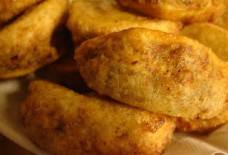Why Paris' first festival of Arab photography is more important than ever
Olivia Snaije, for CNN
As Paris’ inaugural contemporary Arab photography festival draws to a close, visitors are reflecting on the importance of the event, which began three days before terrorist attacks rocked the capital — and has since played backdrop to polarized responses to the city’s Muslim residents.
“The attacks in Paris changed what we talk about,” says Ella Graf, one of a group of German exchange students at the Institut du Monde Arabe (IMA), one of the Biennial’s two principal venues. “Art was already an important part of our stay in Paris but now this exhibit is even more interesting to us, and photography is a great way to access this world.”
The Biennial of Contemporary Arab World Photography, located principally in the IMA and the Maison Européene de la Photographie (MEP) is showing work by more than 50 artists who have worked in the Arab world since the turn of the millennium. Following the attacks on 13 November in which 130 died, mosques in Europe and the U.S. have been vandalized and many Muslims have feared reprisals. But, for others, the disaster has been a cue to learn more about the Middle Eastern context.
Caroline Tabet – To lose one’s sight, 2012
“On Facebook people were talking a lot about how, after the Paris attacks, everyone changed their photograph to the French flag, but that the media ignored the bomb that went off in Beirut only a few days before,” adds another student, Tatjana Wahjudi, examining a giant cityscape of Beirut by Joe Kesrouani.
“Maybe it’s because we all know Paris but only have an abstract impression of the Arab world. Here, maybe we can get a better idea.”
Beyond clichés
Lebanese artist Caroline Tabet who moved to France during her home country’s civil war, and returned to Beirut in 1994, is showing her 2010 series Perdre la Vue (Losing Sight). Working with film that had been unintentionally exposed to X rays, her ethereal photographs also focus on the slow mutation and disappearance of the city for lack of urban planning.
“This Biennial shows the Arab world in all its various identities, whether linguistic or cultural; beyond clichés. You have the impact of politics on the work, but not only,” said Tabet.
38 Days of Re-collection, 2014, Jerusalem
Berlin-based Palestinian artist Steve Sabella, who has said art was his “journey towards freedom”, is exhibiting at IMA. His series “38 days of Re-collection” comprises photographs printed on paint fragments collected in Jerusalem’s Old City, examining the theme of former Palestinian homes now occupied by Israelis.
“Art gives small doses of awareness, and the more doses one gets, the more informed we become about our world and the systems that run it,” says Sabella. “Ai Weiwei is one clear example of how much awareness he has raised globally about injustices seen through his eyes.”
More important than ever
The Franco-Moroccan photographer Leila Alaoui’s series, “Moroccans” showcases the cultural diversity within Moroccan borders. She believes that, today, the Biennale plays a more important role than ever. “It is a vision of multiple perspectives on the Arab world,” she says.
Gaza resident and artist Mohamed Abusal is visiting Paris to exhibit “Shambar,” a series of photos he took at night on the Gaza Strip. He agrees with Alaoui, and says it has been as important for fellow artists as it has for the public.
“We are cut off from the world. As artists we need to move, we need people’s feedback and criticism,” Abusal says. “We need to visit galleries, museums and to be on the street, it’s not enough to just see art on the Internet.”
Source: www.cnn.com


